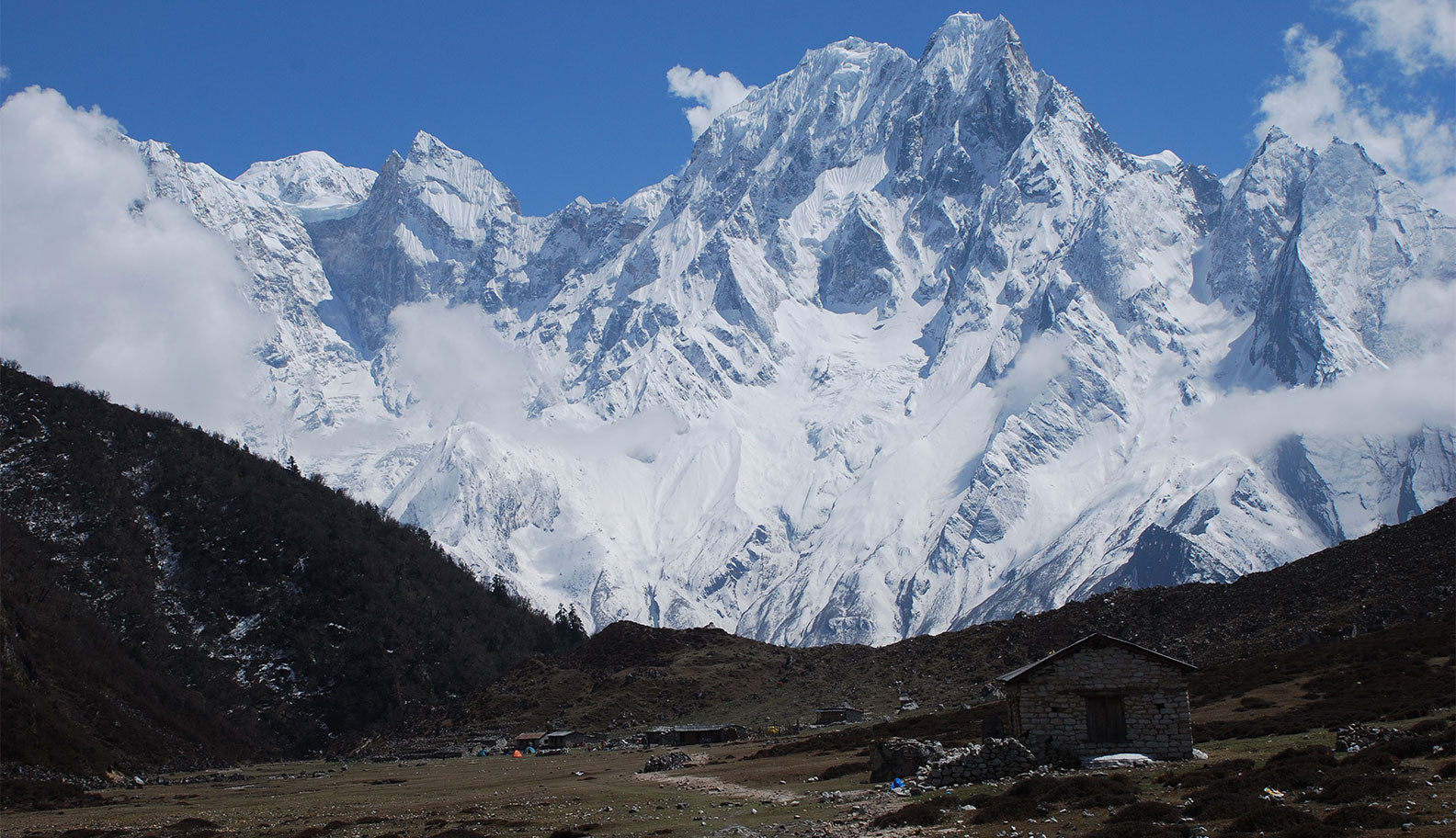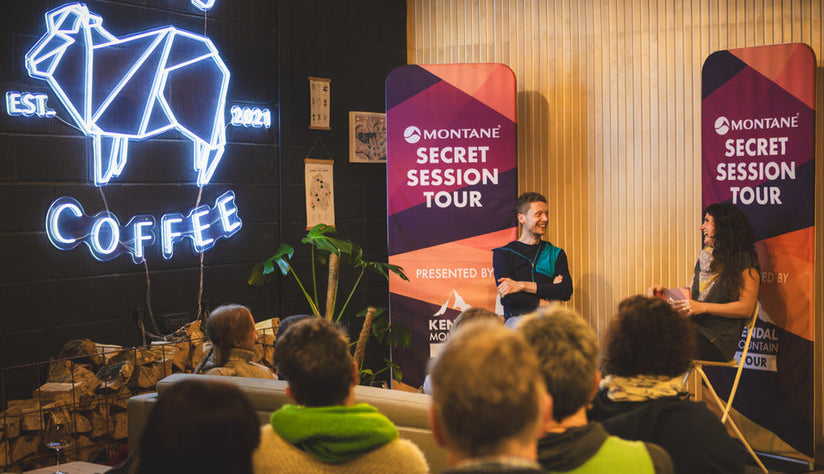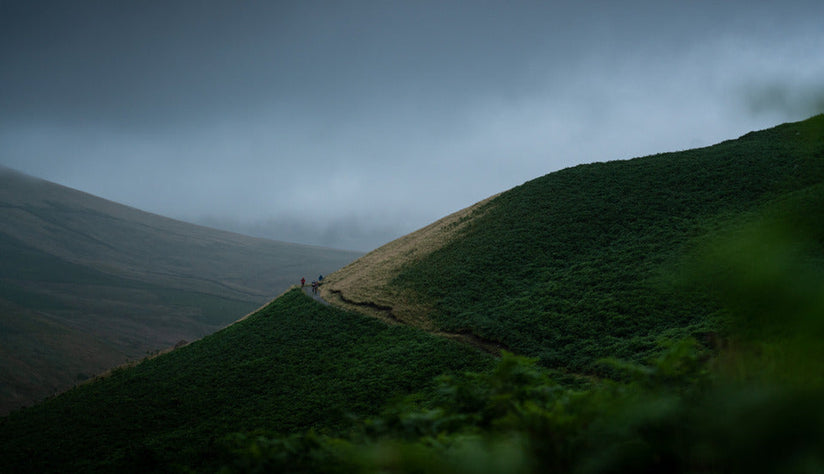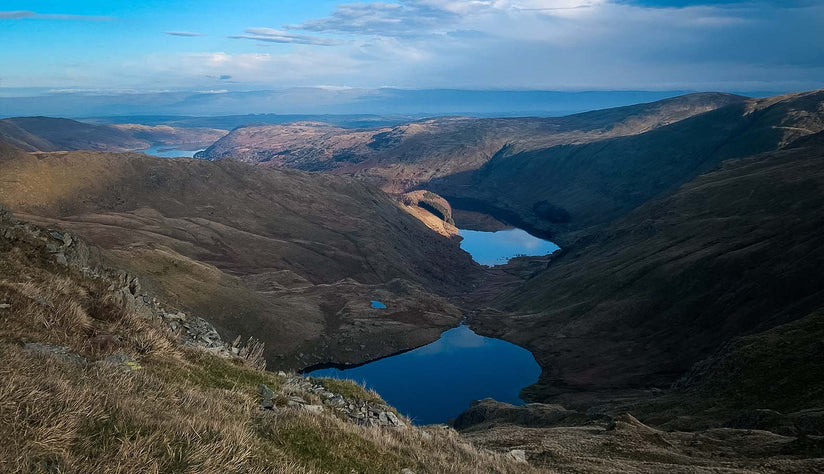The allure of the mountains can be strong. Few of us are lucky enough to live near enough to them, meaning travel from afar is inevitable. As we spend time amongst peaks and passes, we care about the impact we have on this environment, and become torn knowing that our carbon footprint from travel is damaging.
Climate change is causing the glaciers to melt. This, in turn, negatively impacts a steady water supply for huge populations and wildlife. As a result, ecosystems break down as they can’t adapt to this change fast enough. Permafrost, the mortar which holds rock walls together, disintegrates, causing dangerous rock falls and landslides. Not only does this affect the people who live and rely on these mountains, it ultimately has an impact on our ability to undertake the activities we love here too. These are just a few of the major impacts being seen in mountain environments as a result of climate change.
Ultimately, our travel to these places is the most carbon-consuming part of any trip. Once there, it’s easier to make choices that help us to tread lightly in these delicate places. However, taking a flight is an environmentally impactful form of transport, not only from a carbon consumption perspective but also because it fires emissions into a part of the atmosphere where the effect is amplified.
Beyond stopping all travel or cutting ourselves off from our fossil fuel-dependent society, how can we reduce our environmental impact when traveling to the mountains? Here are three mountain journeys I have made which are not only possible by public transport, the lowest of carbon-emitting travel choices, but I believe they are enhanced by it.

Munros from Corrour Station, Scotland
There are few places where a train line diverges from the main road, taking its own path. The West Coast line, which cuts through the Scottish Highlands across Rannoch Moor, before its eventual destination being Fort William to the north, or Glasgow far to the south, is but one. Halfway along this lonely part of the West Highland line the train pauses at a station. This station is unique in the British Isles, because it has no road access, you either get there by train or on foot. At 408m, it is also the highest rail station in the UK.
Stepping off the platform one snowy February day, the train sliding smoothly away, we’d been transported into the still whiteness of a magical Scottish winter day. From here, multiple easy Munros are accessible, either for a circular walk or a linear journey finishing at Rannoch Station.
It is worth knowing the train times before setting out as they aren’t particularly regular. After misjudging the snowy conditions, we missed the train at Rannoch Station and had a long wait. I had anticipated that this could have been an outcome and had packed a slim paperback in my rucksack. My partner accused me of betrayal as he read and reread the interpretation boards about the construction of the West Highland railway in the cold darkness of our wait.
Despite this unintended end to our day, this journey through the mountains is so unique in the British Isles that I’m glad I’ve experienced it, and Tunnocks teacakes paid for via an honesty box in the waiting room made up for the delay!

Traversing the Bernese Oberland, Switzerland
Sat at the train station, our skis were leant against the waiting room building. Boots slung over day packs, lightweight trainers on our feet, and ski salopettes rolled to our calves, we wondered if we’d make all five train connections which the online journey planner had created for us. Of course we did. This was Switzerland, where everything is on time.
We’d left our vehicle where we’d taken the first train, which would be the end of our journey on the south side of the Bernese Oberland. We traveled via Interlaken and then high into the mountains via the Eiger, to the Jungfraujoch at 3571m. Now 4000m peaks and a network of mountain huts were in reach, either on foot in the summer or by skis in the winter and spring.
From the Jungfraujoch we could, if we chose, ski downhill on the longest glacier in mainland Europe, the Aletsch glacier, to where we’d left our vehicle six trains ago. However, we planned a bit more of an interesting route. Staying in the bustling huts overnight we ski mountaineered several 4000m peaks, including the Grosses and Hinteres Fiescherhorn, as well as Grosses Grünhorn, over several days.
Switzerland is not known as a budget destination and, although much of the public transport is affordable, the train through the Eiger to the Jungfraujoch is eye-wateringly expensive. The tiny chocolate bar given out on the train does not come close to easing the pain of the purchase, however, there is a cheaper way to do it. Swiss Rail has a large selection of railcards which aren’t dependent on age. We bought the demi-tariff card which, after an upfront cost, gave us 50% off all travel including the train to the Jungfraujoch, the card paying for itself with this one journey.
The unbelievably good public transport connections in Switzerland make it a very friendly place to travel to the mountains using this method of travel. Another significant advantage of using public transport in Switzerland (and elsewhere) is that it enables linear journeys such as the one we did in Oberland.

The Himalaya
Once on continental Europe, the landmass is continuous until eastern and southern Asia, and there are some pretty big mountains in between.
Traveling overland to the Greater Ranges of Asia is not done for convenience, or as a cost efficient way to travel, it is done simply for the adventure. Slow travel such as this creates connection to people and place, it deepens understanding and despite the trials and tribulations which will no doubt be encountered, the achievement in making such a journey can be affirmative and even life-changing, which is deeply satisfying in itself.
In 2011, after trekking in the Manaslu and Annapurna regions in Nepal and climbing a 6000m peak, I traveled from Kathmandu back to the UK overland using public transport. We made a proper trip of it, taking the time to explore Central Asia and the Southern Caucasus en route, and the opportunity to visit friends on our final leg through Europe. In total, we traveled through 20 countries.
It showed me that the world is smaller and more connected than we imagine, but also full of wonderful diversity. The ancient traders of the Silk Road knew this, a route we loosely followed. It would be possible to do this journey in less than 3 weeks if your logistics were seamless and you did some long, hard days of travel, but we took months to make the most of it. After our time in Nepal we explored the mountains of the Hindu Kush, Pamirs and Caucasus. It remains one of the most epic journeys I’ve taken, and led to opportunities I’d never have had if I’d not put this one crazy idea into action.

Top tips for using public transport to travel to the mountains
- It’s easier than you think to travel by public transport. Sometimes I find it much more difficult in the UK than in out-of-the-way places.
-
Allow more time (but if getting to airports, traffic jams, security etc. is taken into account, it may not be as long as you think) and prepare by bringing your own entertainment.
- Embrace the adventure.
- Relax and enjoy the journey. Watch the world go by or strike up conversations with people you meet along the way.
- Don’t have time to travel overland both ways? Do it one way and take a single flight; you’ve just halved your flight emissions of a return flight by doing this.
Feeling inspired?
This article was brought to you by #TeamMontane alpinist and mountaineer Rebecca Coles, who is also a mountain guide. Find out more about Rebecca on her dedicated website, or hear more from her on our Montane podcast.
At Montane, we are passionate about exploring mountains responsibly. In addition to Rebecca’s ideas featured above, there are several other means of public transport you could look into to help you access the mountains more sustainably. This includes the Caledonian Sleeper Train from London to Scotland, The Man in Seat Sixty One is also a really helpful resource to help you plan journeys by train further afield















